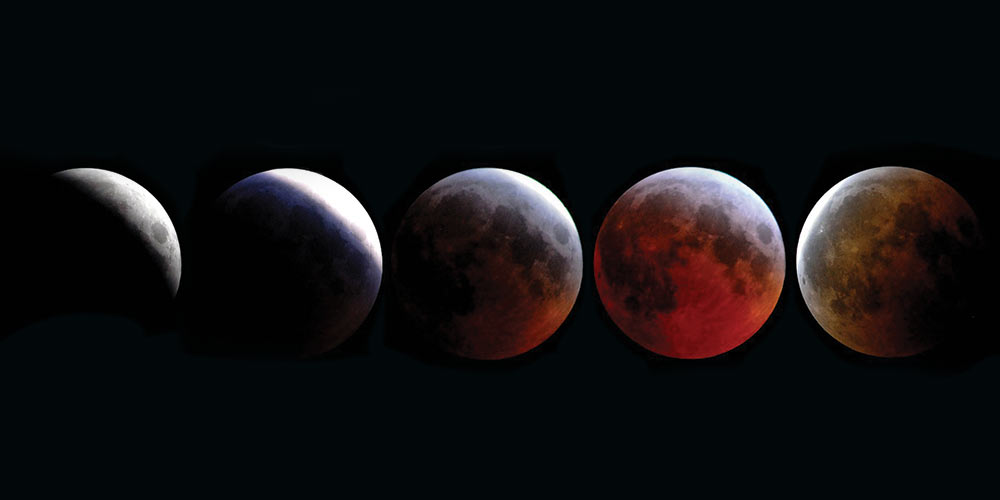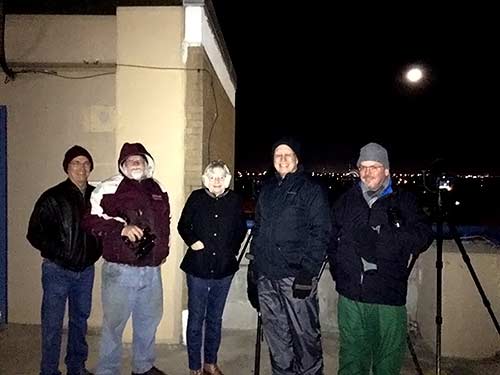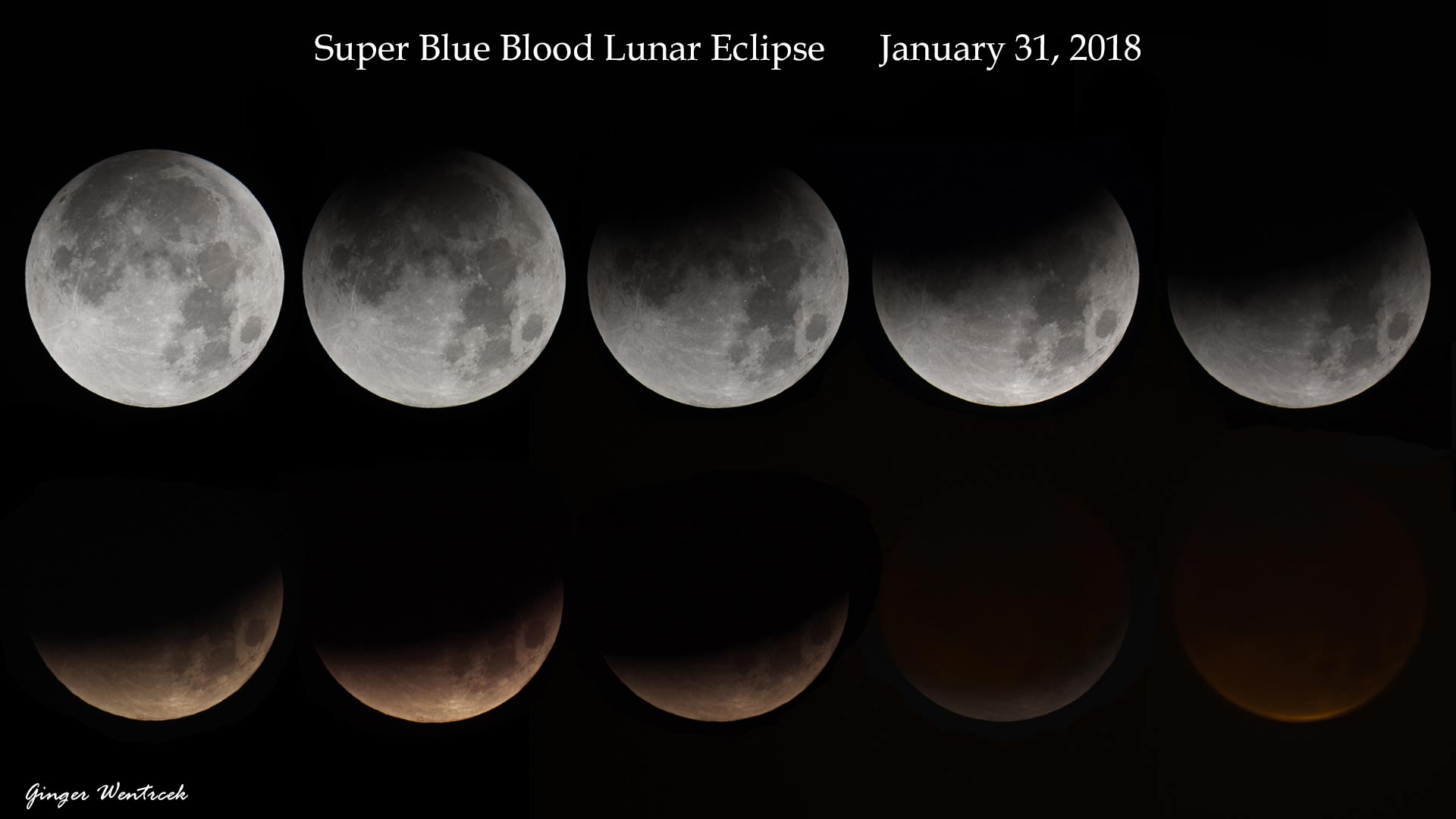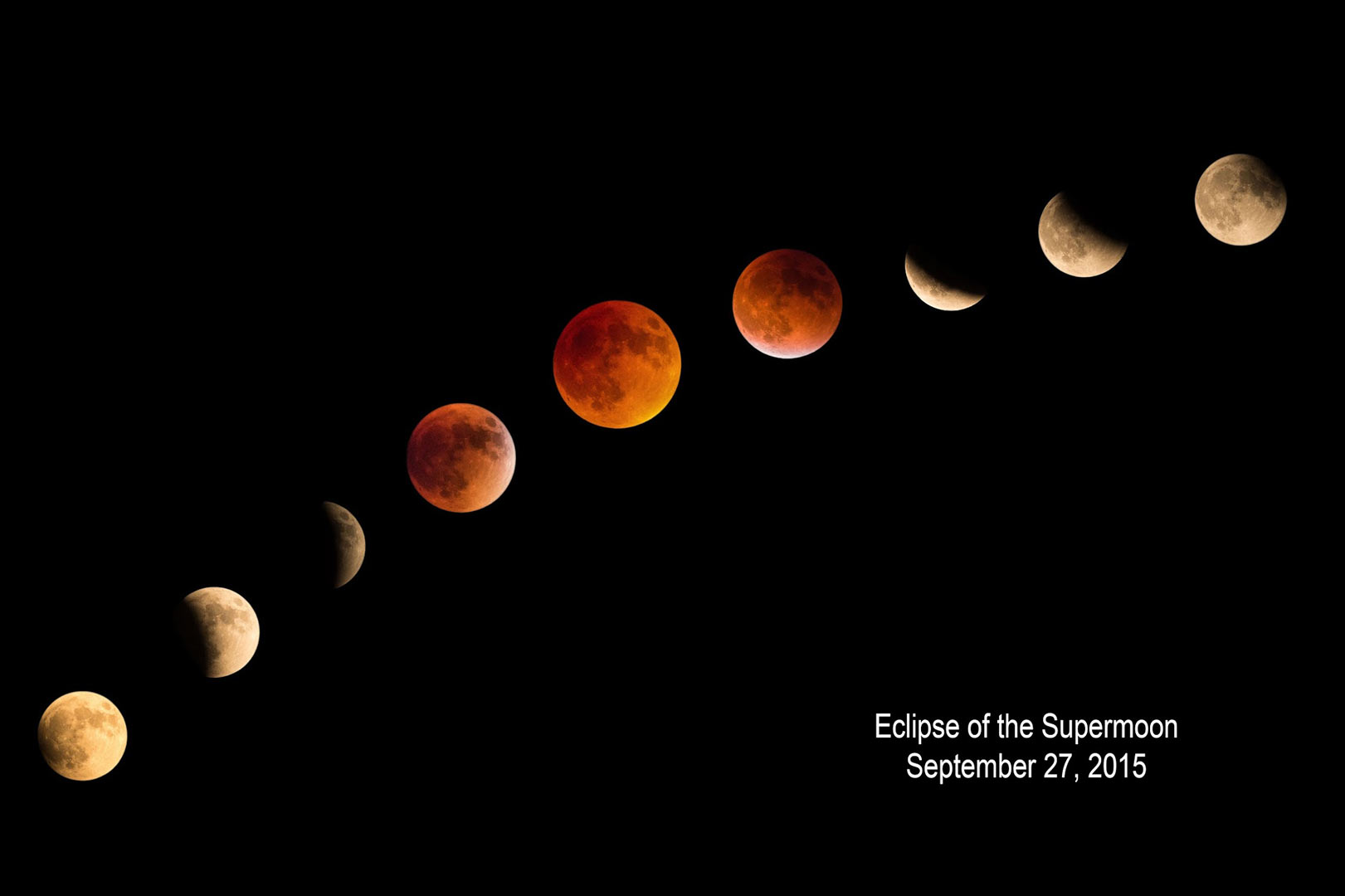


The moon gave us a great show on January 31, 2018, when it passed through the Earth's shadow. This particular event was called a "super blue blood" lunar eclipse.
The last super blue blood lunar eclipse occurred in March 1866, a year after the end of the Civil War! If you missed the January 2018 event, you can catch the next Super Blue Blood Lunar Eclipse, according to NASA, on December 31, 2028.
NASA called the event a "lunar trifecta," the third supermoon since December, and it was worth braving the cold to see the moon go into shadow and then disappear into totality.
BVAC members Dr. Derek Kuhl, Tim Cowden, Dr. Randy Light and wife, Irene, and Ginger Wentrcek and husband, Ernie, gathered on the top floor of the St. Joseph Hospital parking garage to witness the early morning spectacle.
In the Bryan-College Station area, we saw the moon gradually go into shadow until it completely disappeared, just as the clouds were starting to appear and the sun was rising in the east. The moon left Earth's shadow as it went below the horizon, preventing us from viewing the entire eclipse cycle.
Click here to read Dr. Light's article about the equipment, work flow, and camera settings he employed to capture the lunar eclipse.

Left to Right: Mike Bonin, Tim Cowden, Ginger Wentrcek,
Dr. Randy Light, Dr. Derek Kuhl

Lunar eclipse collage by Ginger Wentrcek
Dr. Randy Light photographed the eclipse of the supermoon in 2015 and combined the images to create the photo below.

Eclipse of the Supermoon September 27, 2015 Photo by Randy Light, M.D.